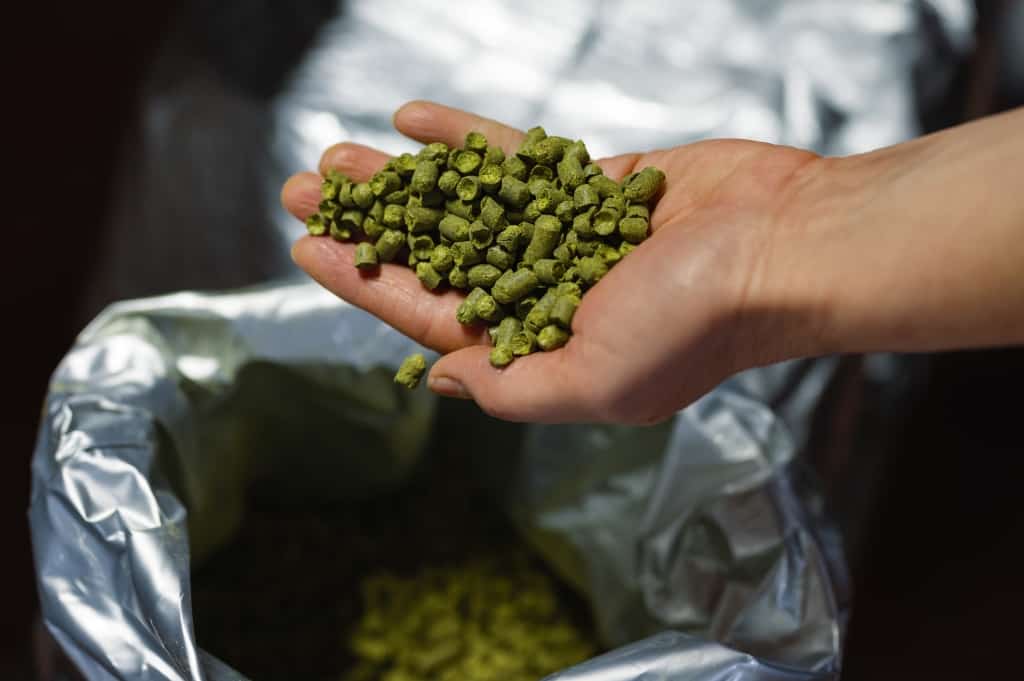Minimizing Beer Loss from Dry-Hopping
Breweries Can Save Thousands of Dollars By Minimizing Beer Loss from Dry-Hopping. Here’s How.

When Skip Schwartz arrived on the job as head brewer at WeldWerks Brewing in Greeley, Colorado, he says the collective “we” at the brewery “kind of prided ourselves on using insane amounts of hops and not worrying about that sort of thing.”
But that stopped once they discovered that “thing” – others might call it “cost” – added up to real money …without adding any perceptible value.
After running some informal experiments on their dry hopping rates, Schwartz says, “We (weren’t) seeing enhanced aromas, we weren’t seeing a sensory differential. At a certain point we’re just wasting hops.”
So they dropped excess dry-hopping, most notably on flagship IPA Juicy Bits, whose 27-pound bill of Mosaic, Citra and El Dorado for every 90 barrels of beer plunged by half.
The savings? $2,533.08 per batch.
High quantities of hops come with a hefty price tag, of course, but so does another factor WeldWerks didn’t initially consider and most brewers still don’t: beer loss from absorption.
“Without question there is a tangible and significant loss when it comes to dry hopping,” says Tim Heath, director of innovation and analytics at Brooklyn-based Other Half Brewing. “The first step is quantifying that loss to measure your success in minimizing it.”
Heath says brewers who don’t practice loss prevention generally lose around one gallon of liquid per pound of vegetative material.
In a 2019 study, the Totally Natural Solutions (TNS) hop oil company more precisely computed dry-hopping beer loss by dosing one hectolitre of 5% ABV beer with T-90 Cascade pellets for 24 hours. Two hundred-fifty gallons resulted in 2% loss, while 2,000 g/hl reached 14% loss.
What’s more, TNS scientists determined, “Increased hopping rates do not result in a linear increase in final flavour and aroma levels and can introduce undesirable flavours.”
An Oregon State University/University of California, Davis study published the same year confirmed these diminishing returns, declaring it an “inefficient use of raw materials” to dry hop above 2.1 lbs/bbl.
While the OSU/UCD study compared chemical extraction efficiencies between varieties, times and temperatures, it appears no experiment published in English has explored how these factors – or the type of tank used or the effect of cones vs. pellets – impact absorption rates.
Until researchers run such detailed studies on inputs, metrics mostly remain a matter of balancing overall dry-hop quantity with desired beer aroma and flavor quality, or, increasingly – as in the case of WeldWerks, Other Half and thousands of additional breweries – achieving higher liquid-to-solid ratios by mixing hop-derived fluids like TNS’ volatile oils and BarthHaas’ Spectrum extract into their dry-hopping schedules.
A bit more can be done, as well, on the process side, beyond potentially dialing down the dosing. Mitigating loss can mean cold crashing after dry hopping to let the hops fall out of suspension then regaining some of that absorbed liquid in a centrifuge.
Other Half swears by centrifuging, as does WeldWerks, whose $200,000 centrifuge purchased in 2020 raised yields from 70-75% to 85-90% and paid for itself in just two years.
Haas Director of Brewing Solutions Phil Chou jokes that while some brewers do insist on putting, “Immoral amounts of really expensive products into their beer,” many are now stopping to weigh out the dollars and sense.
Heath concedes Other Half’s commitment to a predetermined sensory experience keeps its brewers aggressive with its hop use.
“We go into it with the expectation there is going to be loss; that’s just table stakes,” he says. “But how can we get the most impact per pound of hops added and the most efficient separation of solids from liquids? Those are the areas where we seek out continuous improvement and innovation.”
Whether you’re adjusting hopping schemes or trying new hop products, closely monitoring your batches is critical to ensure only one variable is changing at a time. By employing Continuous Fermentation Monitoring, BrewIQ provides complete data sets to compare to previous fermentation, and can be used alongside sensory analysis to maintain brand authenticity. The Event Alerts feature informs users immediately when a fermentation has reached set thresholds, meaning dry hopping schedules can be followed to within 20 minutes.
Pursuing greater efficiency or greater hop impact shouldn’t be stressful. Take the guesswork out with BrewIQ.

